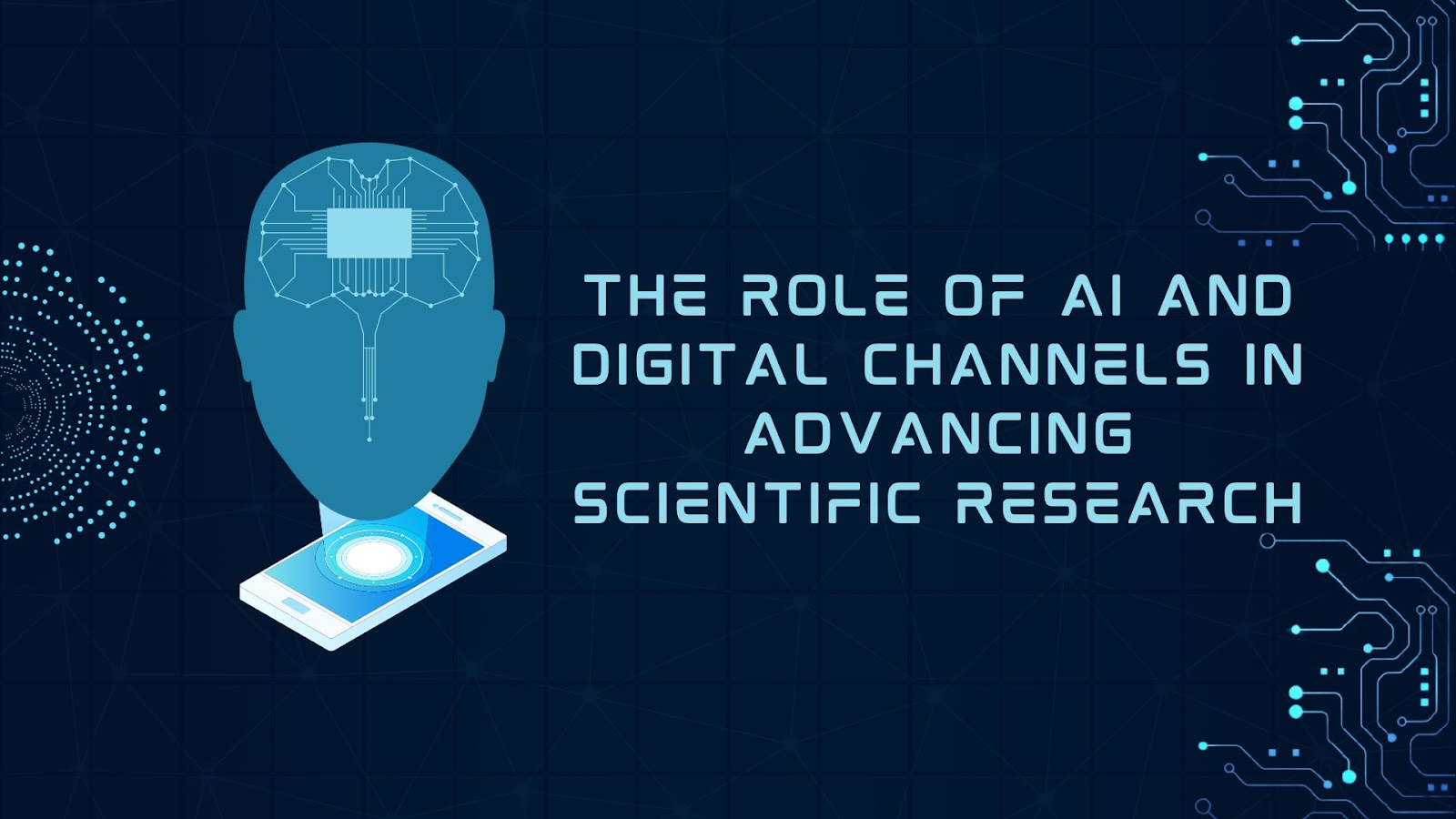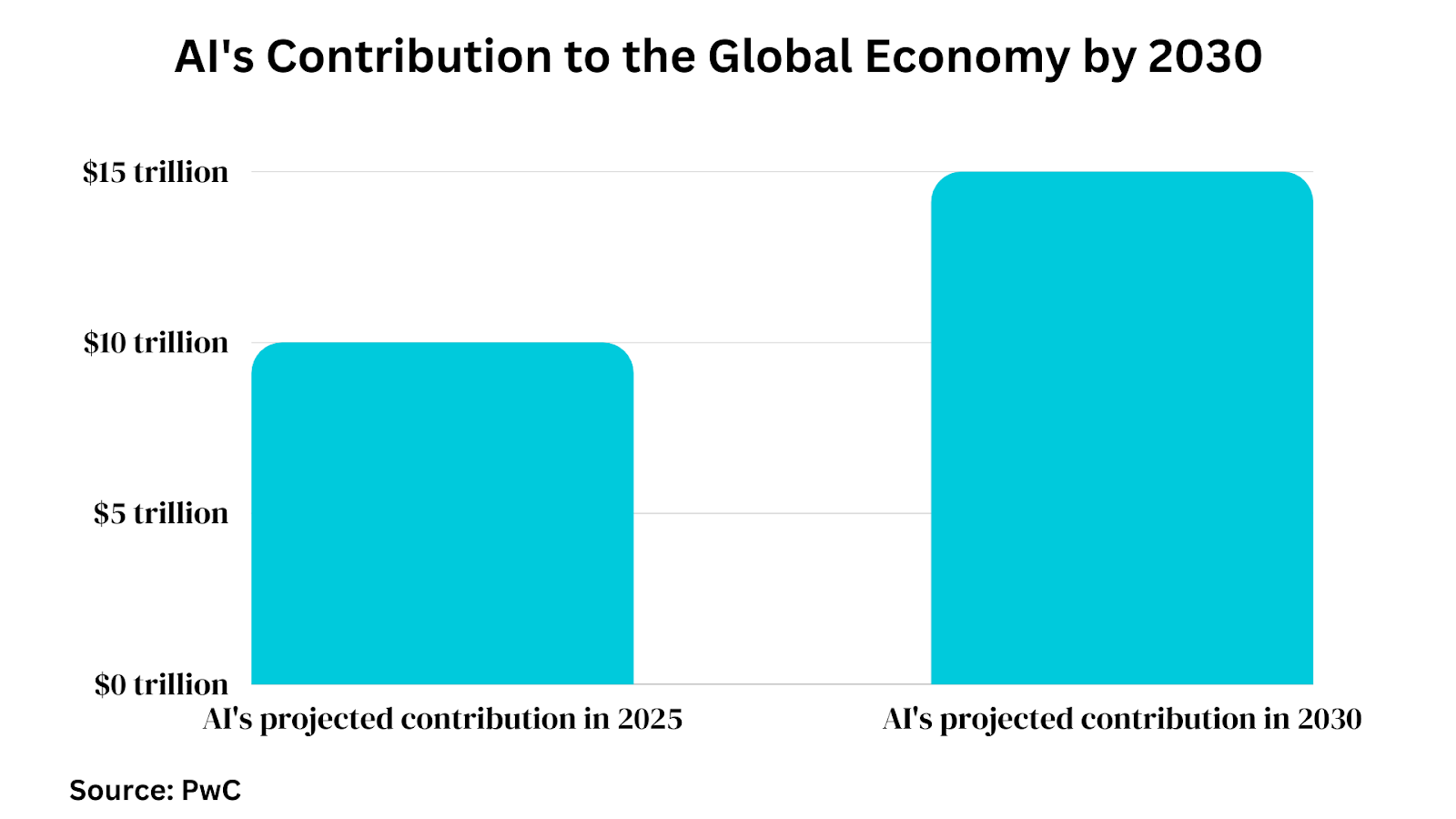The Role of AI and Digital Channels in Advancing Scientific Research
It’s pretty amazing when you think about how far artificial intelligence has come. From just being an idea in science fiction to now being a huge force changing everything about data and technology, it’s been quite a journey! When AI and digital tools come together, they become a powerful combo that can accelerate scientific breakthroughs in different fields. The applications are endless.

The rapid advancements in AI are reshaping the landscape of scientific exploration, making it an exciting and dynamic field to explore. The evolution of AI is shaking things up in the world of science.
Let’s take a look at some of the ways it’s making an impact and enabling breakthroughs.
The Evolution of AI in Scientific Research
Modern AI can be traced back to Alan Turing’s 1950 work, “Computing Machinery and Intelligence.” However, AI’s roots go back to ancient mechanical devices. Turing started the search to make machines think by asking the important question, “Can machines think?”
In the decades that followed, the field of AI witnessed periods of significant progress and setbacks. During the 1960s, there was initial enthusiasm about the prospect of achieving general artificial intelligence. However, funding dried up after failures to meet unrealistic expectations.
The 1970s and 1980s saw groundbreaking developments in knowledge representation, allowing the encoding of human expertise and expert systems. The 1980s introduced connectionism models based on neural networks, enabling learning from data. However, limitations in data and computing power caused another AI winter.
The 2000s saw renewed interest in AI, particularly with the emergence of effective techniques like support vector machines. However, the most significant breakthrough occurred in the 2010s with the introduction of deep learning. The availability of vast amounts of data and computing power enabled multilayer neural networks to achieve astonishingly intelligent capabilities. This brought about transformative real-world applications.
According to PwC, product improvements will drive 45% of overall economic growth by 2030, which will increase consumer demand. Below, the chart depicts the contribution of AI to the global economy by 2030. It is projected to contribute over $15 trillion to the global economy by 2030, demonstrating its growing influence.

Zoho CRM call center software integration is the future of AI and looks incredibly promising from scientific research to business solutions. This technology is not just a fleeting trend; it’s becoming the backbone of modern innovation. As we continue to harness its potential, AI will undoubtedly shape the trajectory of industries worldwide.
The Multi-Dimensional Impact of AI on Scientific Disciplines
Beyond economic projections, AI’s impact is most tangible within specific scientific realms.
In information science, neural networks and deep learning have enabled computers to derive insights from massive datasets. By discovering latent patterns and correlations, this data-driven approach has powered advances in statistics-heavy fields like genetics, healthcare, and physics.
In medical science, AI is revolutionizing patient care and treatment. Deep learning algorithms can analyze radiological images to identify tumors and predict heart disease accurately. AI also shows immense potential for accelerating pharmaceutical research and drug discovery through the mining of molecular databases.
In materials science, AI enables the modeling of complex molecular systems to guide the development of novel materials. It can predict properties by rapidly screening combinations of elements and structures. This accelerates innovations like new alloys, solar cells, and catalysts.
In geosciences, AI enables the modeling of environmental systems and phenomena. It can forecast impending earthquakes, volcanic eruptions, and floods by identifying patterns in seismic, temperature, and ocean data. This aids in disaster prediction and prevention.
Even in theoretical fields like physics and chemistry, AI makes strides by solving intractable problems. It can simulate chemical reactions involving huge numbers of particles and dependencies. AI also provides insights into unraveling mysteries around dark matter, quantum mechanics, and the origins of the universe.
By 2025, the global AI market is projected to reach $190 billion, indicating infiltration across scientific domains.
The Infrastructure Powering AI’s Scientific Advancements
An important factor that has helped AI go mainstream is the increased accessibility of tools and technology. This has marked a recent democratization of AI research and development. On the software front, programmers now have handy frameworks like TensorFlow and PyTorch that make it easy to build custom AI models and algorithms. You don’t have to code everything from scratch anymore. There are also AutoML tools that automate parts of the process, speeding up model development even more.
Special hardware like GPUs and TPUs has also been a game-changer. These chips handle the intense computations needed for AI in parallel, reducing the training periods significantly. It allows researchers to experiment faster to accelerate their work. Thanks to cloud services like Google Cloud and AWS, scientists big and small can leverage massive computing power on demand. This makes it possible to run complex AI experiments, simulations, and analyses that might not even have been possible before.
So between the software, hardware, and cloud infrastructure advancements, the barriers to entry for innovating with AI are way lower. It’s stimulating progress and collaboration in the field. Exciting times are ahead!
AI’s Integration with Digital Channels for Research Dissemination
In addition to facilitating discoveries, AI, when integrated with digital channels, significantly accelerates scientific collaboration and communication.
The widespread availability of high-speed internet and the rise of online publishing platforms have digitally transformed research. AI-powered online databases and digital libraries ensure findings are accessible worldwide. Scientists can quickly reference past work or identify research gaps.
Online open-access journals and preprint servers allow instant sharing of discoveries globally. Spatial collaboration tools even let geographically dispersed teams work together. This digital ecosystem accelerates the pace of innovation.
Let’s examine a case study in nanophotonics. By employing AI to design tiny structures that interact with light, researchers achieved a 500% efficiency boost in LEDs. The findings were rapidly disseminated through digital channels, allowing replication by others. Within a year, the discovery advanced industry-wide LED efficiencies.
The Future of AI in Scientific Research
The future possibilities of AI in advancing science are limitless. With predictive analytics, AI could analyze research trajectories to provide insights on the most promising directions. It may even automate aspects of the scientific method, from forming hypotheses to designing experiments.
However, as AI becomes more integrated into science, it’s crucial to exercise careful oversight to maintain ethical practices. The use of “black box” algorithms, while enhancing human capabilities, also brings certain risks. Upholding research integrity, minimizing biases, and ensuring transparency should be prioritized in the adoption of AI within the scientific community.
By taking advantage of the synergies between AI and digital ecosystems while optimizing for inclusivity and ethics, science is primed for an era of remarkable progress. The benefits of these advancements will lead to both economic and social prosperity.
Key Takeaways
AI is transforming diverse scientific disciplines through data-driven insights and complex modeling
Robust digital infrastructure and tools have enabled the democratization of AI research
Combining AI with digital channels accelerates collaboration and the pace of innovation
With ethical oversight, AI promises to usher in new frontiers of scientific progress
Conclusion
It’s quite a journey to dive into the world of AI and its transformative impact on scientific research. It goes beyond machines and data; it’s about pushing the boundaries of human knowledge and the way we make discoveries. With AI and digital channels working hand in hand, the future of science feels brighter and more connected than ever. Here’s to the next wave of discoveries and the innovations that will surely follow!
FAQs
How is AI different from traditional computational methods in scientific research?
While traditional methods rely on predefined algorithms and models, AI, especially machine learning, adapts and learns from data, often leading to unexpected insights and solutions.
Are there any limitations or challenges to integrating AI into scientific research?
Yes, challenges include data quality and quantity, the interpretability of AI models, and ensuring that AI-driven conclusions align with scientific principles.
How do digital channels enhance the dissemination and collaboration of AI-driven scientific research?
Digital channels, especially AI-powered platforms, make research findings more accessible, enable global collaboration, and accelerate the pace of scientific discoveries.



